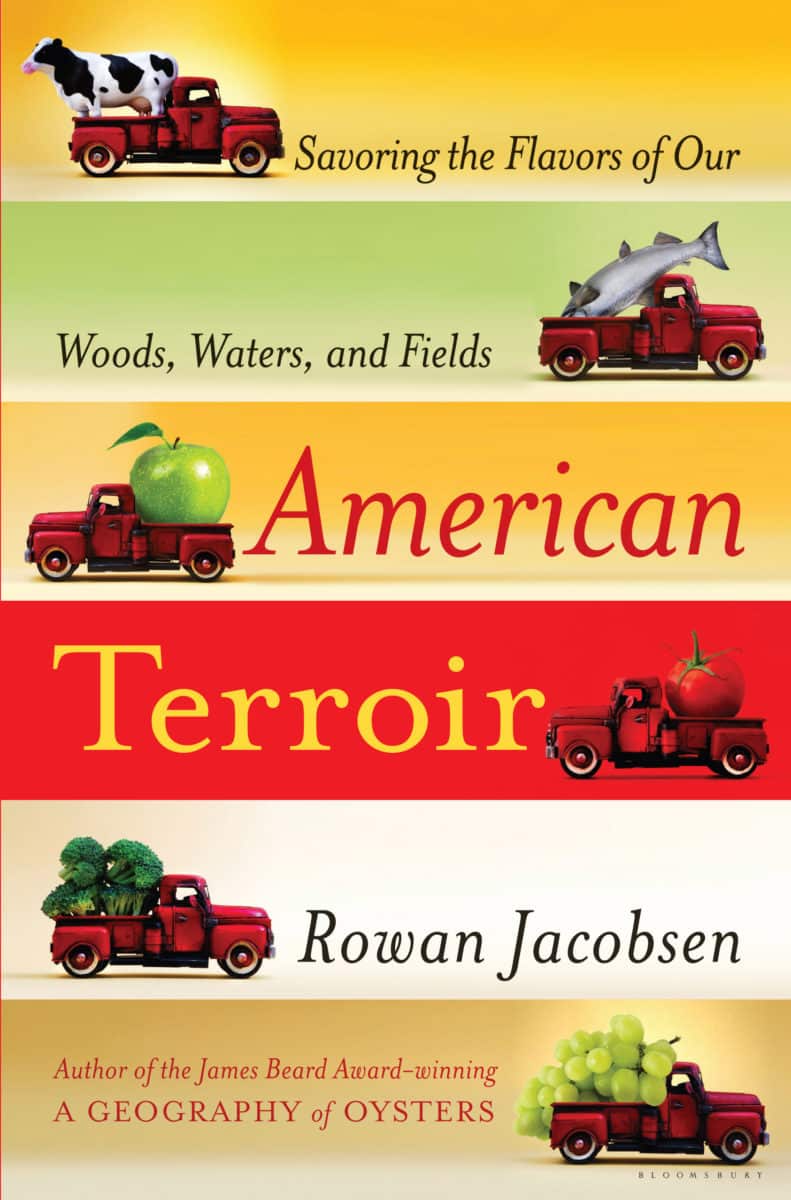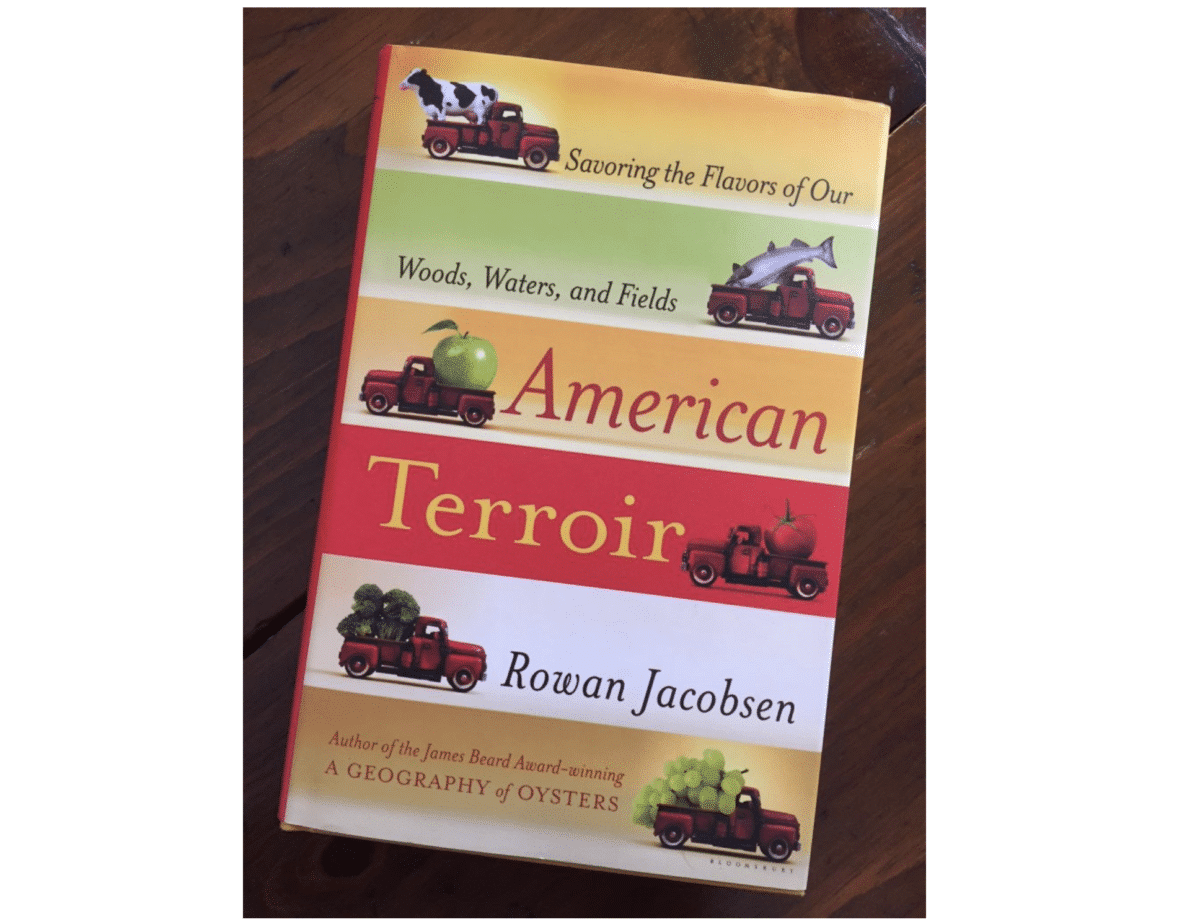by Rowan Jacobsen (Bloomsbury 2010) 272 pages with a few recipes
Rowan Jacobsen has been on a mission to seek out and spread the word about some of the best foods being grown in America. He is an accomplished author who writes about food, the environment, and the connections between the two. His previous books include A Geography of Oysters, winner of the 2007 James Beard Award, and Fruitless Fall, the story of the precarious future of the honey bee, and The Living Shore, a tale about the resurgence of the Olympia oyster and how it might lend insight into wider issues regarding our environment.
In American Terroir, Jacobsen considers more than a dozen products that represent, to paraphrase the author, “a very good day, food-wise.” The expression of place is the definition of terroir (tare-wahr) which can be translated from French as “the taste of place.” He investigates why sugar maples on a stony mountainside in Vermont yield the most flavorful maple syrup, why the gnarly, pocked cider apples make the best flavored brew or why dusty, stone-strewn vineyards produce the grapes that make legendary wines. Mr. Jacobsen is someone who is good company, possessing a clever, sometimes naughty, wit. He has a talent for explaining history and technical information in a cogent, yet entertaining, manner. He is not afraid to give his opinion: he prefers light roast coffee, gritty chocolate and he claims that red wine doesn’t “go” with food (!). You may not agree, but his thorough and compelling research offers real food for thought.
If you are interested in knowing more about how soil, water and micro-climate influence food production — and sometimes can create magic — you will enjoy reading this book.
I enjoyed learning that
- ‘Buddy syrup’ occurs when maple sap, collected in late spring (when the trees are budding), acquires an odd, fake chocolate “Tootsie-Roll” taste (not good) when it’s boiled down into syrup.
- Francois Brouillard, “Francois of the Woods,” a forager in Quebec, with his chef partner, Nancy Hinton, operates a restaurant, Les Jardins Sauvages, which offers year-round forest gastronomy . They prepare a single seating, prix-fixe meal every Friday and Saturday comprised solely of Francois’s foraged plants and fungi (they also raise their own venison).
- Mexican avocados, perfectly situated in the tropical highland forest’s volcanic soil of the Michoacan, west of Mexico City, bloom four times a year. There, avocados are always available and in season. Avocados ripen only after they are picked. The ready-to-pick fruit can wait on the tree for up to 6 months, its oil content increasing as it sits.

Francois Brouillard, “Francois of the Woods,” a forager in Quebec, who, with his chef partner, Nancy Hinton, operates a restaurant, Les Jardins Sauvages, which offers year-round forest gastronomy . They prepare a single seating, prix-fixe meal every Friday and Saturday comprised solely of Francois’s foraged plants and fungi (they also raise their own venison).
- Honey made from avocados is not very popular as its flavor is bitter and vegetal. However, at Heidrun Meadery, which specializes in Champagne-style mead in Point Reyes Station, California, their avocado-blossom honey varietal is one of their most popular. It’s described as being dry with a slight hop-like bitterness.
- You can stand in one spot on Prince Edward Island and see mussels being harvested, turn your head and see potatoes pulled from the earth — the fixings for PEI’s popular, terroir-driven dish, moules frite.

First published April 2014
